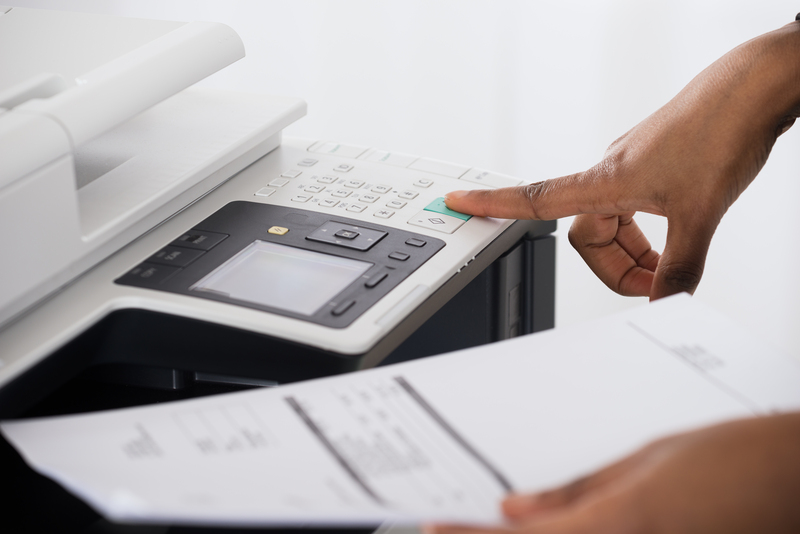Long-Term Clutter Control: Practical Maintenance Guide
Clutter is often a sneaky adversary. It creeps into homes, offices, and daily life, causing stress and making it harder to relax or work efficiently. But short-term tidying isn't enough: true clutter control requires sustainable strategies and ongoing effort. In this comprehensive guide, you'll learn the keys to **long-term clutter management** and discover actionable steps to maintain an organized, serene space for good.

Why Is Clutter Control Important?
At first glance, a stray pile of mail or an overflowing closet might seem harmless. Yet, scientific studies have shown that clutter can impact both your mental and physical wellbeing. Featuring elements of stress reduction, productivity improvement, and health enhancement, embracing practical clutter maintenance is more than just an aesthetic choice.
- Reduces Anxiety: A tidy environment eases your mind and allows you to focus.
- Boosts Efficiency: When everything is in its place, tasks become quicker and less frustrating.
- Healthier Lifestyle: Less dust, fewer allergens, and more space can positively impact physical health.
- Supports Mindful Living: Regular decluttering creates room for the things that matter most.
Understanding the Root Causes of Clutter
To achieve long-term clutter control, it's essential to understand why clutter accumulates. Recognizing these patterns helps promote sustainable change:
- Emotional Attachment: Sentimental value makes it difficult to let go of certain items.
- Busy Lifestyles: Lack of time leads to postponed organizing tasks.
- Consumer Habits: Impulse buying and over-accumulation of possessions clutter spaces quickly.
- Poor Storage Solutions: Ineffective storage fuels clutter build-up.
- Lack of Maintenance Routines: Without regular upkeep, tidy zones revert to chaos.
Step-by-Step Guide to Long-Term Clutter Control
Getting rid of clutter once is just the beginning. To maintain clutter-free spaces, follow this ongoing, practical approach:
1. Set Realistic and Clear Goals
- Start Small: Divide large tasks into smaller, manageable actions, such as tackling a single drawer or shelf at a time.
- Define Success: Be specific about what "clutter-free" means for you. For one person, it may mean clear countertops; for another, minimal items in every room.
- Timeframe: Don't aim to declutter your whole house in one day. Set weekly or monthly targets.
2. Declutter with the "Four-Box" Method
As you begin to organize, use four containers labeled:
- Keep
- Donate/Sell
- Storage
- Trash
Sort each item you pick up into one of these boxes, helping you make decisive, consistent progress.
3. Create Sustainable Storage Solutions
Effective storage is crucial for maintaining a clutter-free home. Consider these organizational tips:
- Go Vertical: Use wall shelves, hooks, and hanging organizers to capitalize on unused space.
- Clear Containers: Transparent bins let you see contents at a glance.
- Label Everything: Labels are your ally for long-term clutter maintenance.
- Optimize Drawers: Drawer dividers or small containers prevent items from jumbling together.
4. Establish a Daily and Weekly Routine
Consistency is the secret to sustained clutter control. Build these habits into your schedule:
- Daily: Spend 10 minutes resetting busy areas, like the kitchen counter or office desk.
- Weekly: Choose a day for deeper resets--clean out the fridge, return items to their homes, empty trash bins.
- Monthly: Go through clothes, books, or paperwork to catch accumulating items.
5. Use "One In, One Out" Rule
Long-term clutter control depends on mindful consumption. For every new item brought home, remove another:
- Apply to everything: Clothes, electronics, toys, books, kitchen gadgets.
- Donate or sell unwanted items: Give unused items a new life, reducing waste.
6. Manage Paper Clutter Efficiently
Piles of mail, old bills, and printouts are all-too-common culprits. To keep paper clutter at bay:
- Go digital when possible: Opt for electronic statements and online billing.
- Sort mail immediately: Recycle junk, file important papers, and handle tasks right away.
- Set up a filing system: Use labeled folders for taxes, warranties, and vital records.
7. Regularly Assess and Adjust Systems
As your life changes, your organizational needs may also shift. Every few months, review your decluttering routines and storage solutions:
- What's Not Working? If a basket is always overflowing, it may be misplaced or too small.
- What's Improved? Celebrate areas that stay consistently tidy.
- Where Are the Trouble Spots? Pinpoint patterns and try new methods if needed.
Room-By-Room Maintenance Strategies
The best clutter control methods differ for each part of your home or workspace. Here's how to approach various spaces:
Kitchen: The Heart of the Home
- Daily sweep: Clear countertops and quickly scan for items that don't belong.
- Organize by use: Frequently used utensils and appliances up front; rarely used items in storage.
- Purge expired foods: Monthly review of your fridge and pantry eliminates unnecessary clutter.
Living Room: Keep It Inviting
- Limit decorative items: Curate displays--fewer carefully chosen pieces are easier to maintain than many knick-knacks.
- Use multi-functional furniture: Ottomans, benches, and coffee tables with storage keep everyday items handy but out of sight.
- Books and electronics: Use shelves, baskets, and cable organizers to maintain tidiness.
Bedroom: Promote Restful Spaces
- Clear surfaces: Only keep essentials on nightstands and dressers.
- Closet rules: Turn hangers backward, and after six months, donate clothes that haven't been worn.
- Under-bed storage: Use for seasonal items, shoes, or bedding, but avoid creating an out-of-sight dumping ground.
Home Office: Boost Productivity
- Go paperless: Scan documents and save backups digitally.
- Cable management: Keep power strips and excess wires organized with clips or sleeves.
- End-of-day tidy: Take five minutes to organize your workspace each evening.
Bathroom: Small Space, Big Challenge
- First-in, first-out: Use up older toiletries before opening new ones.
- Limit products: Keep only daily-use items out; store extras and backup supplies elsewhere.
- Use shelves or organizers: Utilize vertical space for towels, cosmetics, and cleaning tools.
Maintaining Motivation: How to Stay Committed
Even the neatest people find that clutter tries to creep back in. The key to *long-lasting clutter control* is motivation and support:
- Enlist family and housemates: Teach everyone to maintain new systems and disciplines.
- Celebrate milestones: Each decluttered drawer or closet is a victory!
- Remind yourself: Keep a photo of your favorite clutter-free space for inspiration.
- Practice gratitude: Fewer things can mean more appreciation for what you do have.
- Reward yourself: After big decluttering projects, treat yourself to a movie night or your favorite meal (not more stuff!).
Clutter Control for Kids and Families
Teaching clutter control strategies at an early age can set the stage for a lifetime of organizational success. Involve kids in the process:
- Make tidying a game: Set timers, use music, or race to clear spaces.
- Use kid-friendly storage: Bins, labels with pictures, and open shelving empower children to help.
- Set regular purges: Go through toys and clothes at the change of each season.
- Model good habits: When adults participate, kids are more likely to follow suit.
Common Clutter Control Myths Debunked
- Myth 1: "I'm just not an organized person."
Organizational skills can be learned and improved with practice. - Myth 2: "I don't have time to declutter."
Just 10 minutes a day makes a significant impact over time. - Myth 3: "Neat homes take constant work."
With efficient systems, maintaining order is effortless.
Top Tools and Resources for Efficient Clutter Management
Modern solutions can make long-term clutter maintenance much easier:
- Apps: Try organization apps like Todoist, Trello, or Google Keep to track decluttering goals and schedules.
- Donation pick-up: Many charities offer free pickups for donated items.
- Container stores: Invest in smart, modular storage to tailor solutions for every space.
- Professional organizers: For more challenging decluttering projects, consider a consultation with an expert.

The Benefits of Long-Term Clutter Control: More than Clean Spaces
Embracing a lifestyle of clutter control transforms more than just your physical environment. Here are added bonuses:
- Improved focus and creativity: A tidy space frees your mind for better thinking.
- Financial savings: Knowing what you have prevents buying duplicates or unnecessary extras.
- Enhanced relationships: Shared spaces stay peaceful and welcoming.
- Greater sense of control: Organized surroundings empower you to take charge of your life.
Conclusion: Make Clutter Control a Lifelong Habit
Long-term clutter control isn't a one-time event--it's a lifestyle rooted in thoughtful habits and mindful living. By setting clear goals, establishing routine maintenance, and adapting systems to fit your changing needs, you can enjoy the peace, efficiency, and satisfaction of an organized life. Remember, it's not about perfection but about consistent progress. Start today--and experience the ongoing rewards of practical clutter management for years to come.